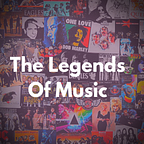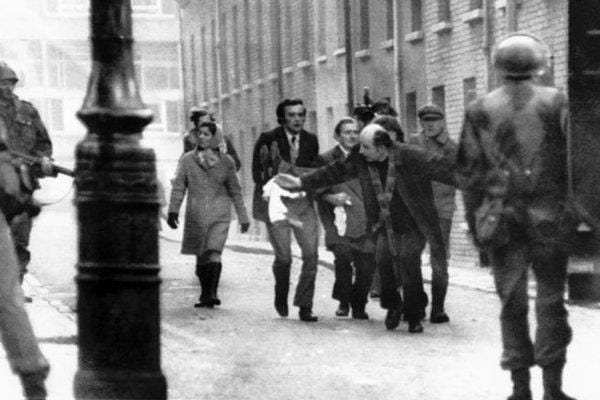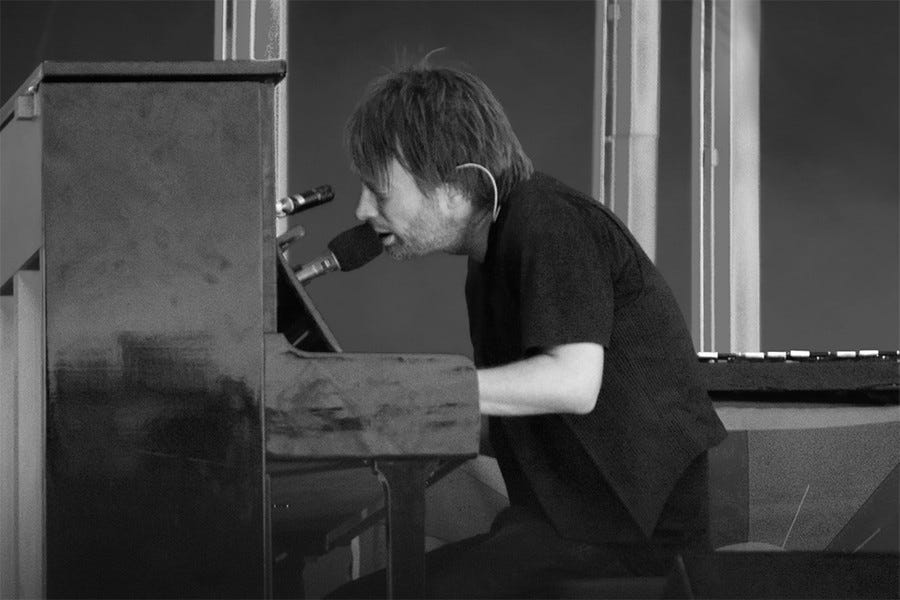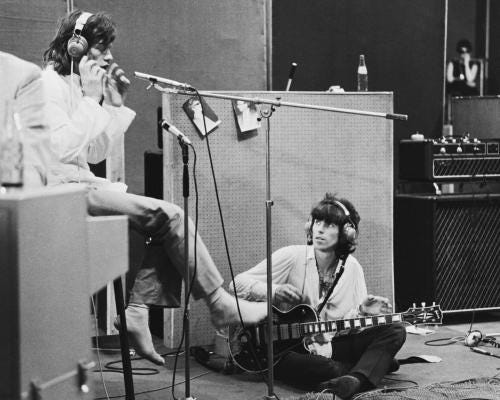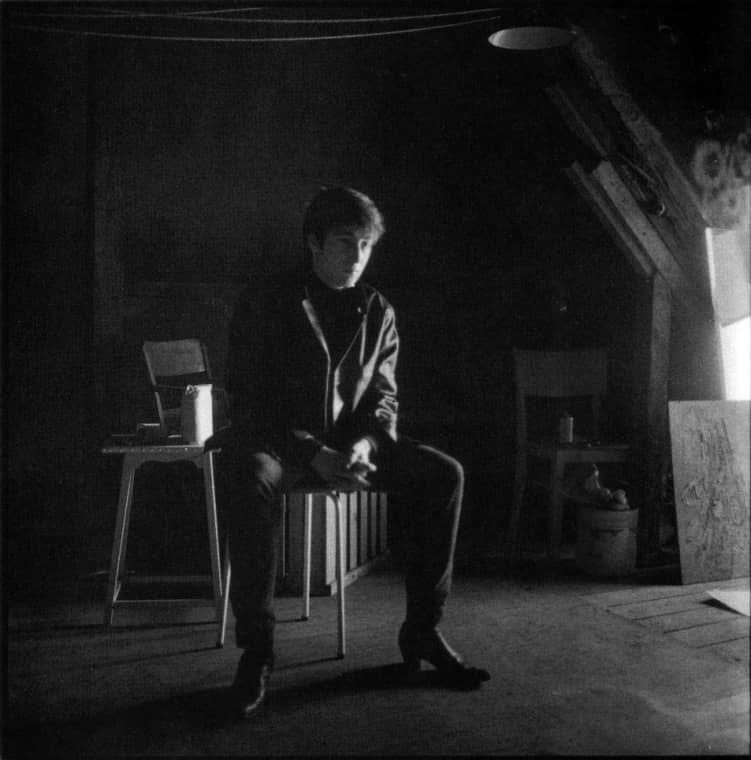The Story Of Elmore James
Here’s a bluesmen who’s personification as a musician soon became the roadmap that every musician soon followed in decades to come. His unique ability as a singer, songwriter, instrumentalist & guitarist earned him the title “King of The Slide Guitar”. As a guitarist he is notable for loud amplification and a distant tone, which went onto influence generations of musicians like Eric Clapton, Brian Jones & Peter Green for example. Although his name may disappear alongside the commercial likes of his Chicago Blues peers, without him Rock N’ Roll wouldn’t have existed today.
Birth and Introduction to music
Elmore James was born on January 27th 1918 in Elmore Brooks in Richland, Holmes County, Mississippi as the illegitimate son of 15 year old Leola Brooks. His father was Joe Willie “Frost” James, who moved in with his mother and was the reason Elmore took his surname. At the age of 12 he started making music using one-string instruments like the diddley-bow, which was strung on a shack wall. Eventually as time passed Elmore developed into a solid musician by the time he was 18. It was during this period that he met a certain musician who went onto became one of his strongest influences. This was none other than the legendary Robert Johnson.
This meeting took place in Belzoni, Mississippi where he was meeting one of his good friends Aleck Miller that soon went onto find fame under the moniker Sonny Boy Williamson II. Before this meeting Elmore’s style of playing the guitar was less of a slide guitarist. However, it was Robert Johnson who showed him how to play the guitar using a metal sleeve on your finger that soon became the slide. He also began covering songs by Chicago Blues musician Tampa Red, who was another influence on Elmore in developing his distinctive Slide guitar sound. He also inherited two musicians from his band that would go onto form his backing band, ‘The Broom Dusters’, which consisted of “Little” Johnny Jones on the piano and Odie Payne on the drums.
Development as a musician
In 1943, he was drafted into the United States Navy during WWII and participated as a coxswain during the invasion of Guam. Eventually he returned to Mississippi for Xmas in 1945, where he eventually settled with his adopted brother Robert Holston, who owned a electric shop. It was at this shop where James created his signature electrical guitar sound, which was devised by using parts from the shop and an unusual placement of two DeArmond pickups. He also applied his newly acquired electrical engineering skills to hot-wire his amplifier to give more power and distortion, so unlike most guitarists of the time, he really could ‘turn it up to 11’! This gave his slide guitar a unique edge, which was paired with his melodramatic, almost frantic voice that marked him out as a rare talent. Whether you know it or not this move could singlehandedly be the birth of garage rock as we know it.
Upon his return to Mississippi, he collaborated once again with ‘Sonny Boy Williamson II’, where they played gigs around the Delta and Memphis. He even made broadcasts on The King Biscuit Radio Show out of Helena, where ‘Sonny Boy’ had a job as a DJ. However, despite his growing accolades Elmore did not exactly have the image that a bluesmen does. Instead he was suffering from a recurrent heart complaint and he looked more like a schoolteacher in his big heavy glasses and conservative suits.
Recording for Labels, “Dust My Broom” & Death
In January of 1951, he began recording with Trumpet Records in January of 1951, as a sidemen for Sonny Boy Williamson II and other artists like Willie Love. During this period he also experienced moderate success with “Dust My Broom”, which surprisingly became a hit in 1952. Legend has it that Elmore didn’t even know he was being recorded when the recording sessions for the song took place on August 5 1951. He was in the studio with Sonny Boy Williamson II at the end of a studio session for Trumpet Records in Jackson, Mississippi when Sonny Boy persuaded Elmore to perform the Robert Johnson classic just for fun. What he didn’t know is that the session tapes were still running and captured the performance. The single was released without his permission and quickly became a Top-10 hit and went to influence countless artists from the 1960’s like Peter Green, Eric Clapton & Brian Jones for example.
He eventually broke his contract with Trumpet Records and signed for the Bihari brothers through their scout Ike Turner, who contributed with piano and guitar on a couple of his early recordings for the label. During this period he continued to tour with his band ‘The Broomdusters’ where they experienced success as a popular live act, regularly broadcasting for ‘Big Bill Hill’ on WPOA, and making a series of very successful records. These sessions produced a distorted and violently over-amplified sound that we associate with Elmore James, which later influenced almost every player who came after him. This inspired him to broaden his horizons by recording music for various popular labels like Chess Records, Flair Records, Meteora Records and Mordern Records.
Another song he’s notable for is Joe Turner’s 1954 top 10 R&B hit “TV mama” on, which he played lead electric guitar. By 1959 he began recording for Bobby Robinson’s Fire Records, which released “The Sky Is Crying”, “My Bleeding Heart”, “Stranger Blues”, “Look on Yonder Wall”, “Done Somebody Wrong”, and “Shake Your Moneymaker”, among others.
However, despite all this Elmore’s fame didn’t spread beyond the borders of the Delta. In an effort to expand his horizons in 1953 Elmore recorded music with Chess Records, in an effort to target their more successful marketing organisation. However, due to contracts already signed with the Bihari Brothers the tapes were canned until 1960, which was the period he recorded more more tracks with Chess Records. Eventually the contract with the Bihari brothers ran out in 1957 and after that he recorded a number of hits for a succession of labels like Chief Records. This also includes classics like ‘ It Hurts Me Too’, which stand out in his unique discography.
Unfortunately Elmore James passed away from a heart attack at his cousin’s ‘HomesicJames’s apartment in Chicago in 1963. He was at the height of his powers and had he lived a few more years he would have heard his monstrous guitar sound in the likes of Brian Jones from The Rolling Stones, Jeremy Spencer and Peter Green in Fleetwood Mac, Rory Gallagher and Duane Allaman, Eric Clapton and Johnny Winter. Eventually from there it entered the conscious of every guitar player who plays the slide guitar.
Without a shout of a doubt the ‘artistic transmission’ in Elmore James’s music originated from the long fingers of Robert Johnson and his spirit has now been passed down into every wooping, weeping, soaring slide guitar solo we hear today.
Legacy, Sound & Influence
For Elmore James the “Blues” made several crossover’s into other styles of music, which was a tactic other musicians like Muddy Waters, Howlin Wolf and B.B.King employed. However, what remained distinctive here was his guitar’s unique tone. For example his tone used to come from a modified hollow-body acoustic guitar, which sounded like a roughed up tougher version of the more “modern” solid-body guitars. In 1959, Muddy Waters took a blues fan from Belgium George Adins to see Elmore James live and he recalled:
“Elmore will always remain the most exciting, dramatic blues singer and guitarist that I’ve ever had a chance to see perform in the flesh. On our way we listened to him on the radio as Big Bill Hill … was broadcasting direct from that place. I was burning to see Elmore James and before we even pushed open the door of the club, we could hear Elmore’s violent guitar sound. Although the place was overcrowded, we managed to find a seat close to the bandstand and the blues came falling down on me as it had never done before. Watching Elmore sing and play, backed by a solid blues band (Homesick James, J.T. Brown, Boyd Atkins and Sam Cassell) made me feel real fine. Wearing thick glasses, Elmore’s face always had an expressive and dramatic look, especially when he was real gone on the slow blues. Singing with a strong and rough voice, he really didn’t need a mike. On such slow blues as “I’m Worried” — “Make My Dreams Come True” — “It Hurts Me”, his voice reached a climax and created a tension that was unmistakably the down and out blues. Notwithstanding that raw voice, Elmore sang his blues with a particular feeling, an emotion and depth that showed his country background. His singing was… fed, reinforced by his own guitar accompaniment which was as rough, violent and expressive as was his voice. Using the bottleneck technique most of the time, Elmore really let his guitar sound as I had never heard a guitar sound before. You just couldn’t sit still! You had to move…”
Adins also witnessed James at the Alex Club, on the West Side of Chicago, where he recalled:
“He always played for a dance audience and he made the people jump. “Bobby’s Rock” was at that time one of the favourite numbers with the crowd and Elmore used to play [it] for fifteen minutes and more. You just couldn’t stand that hysteric sound coming down on you. The place was rocking, swinging!”
After reading that sentence above one may realise that Elmore James was not only a Bluesmen, but also a pioneer and an innovator. Without him Rock N Roll would be non existent. His influence is heard in the work of almost every post-war bottleneck player, and his source of inspiration can be considered as a classic example of ‘artistic transmission’. Many blues guitarists like Homesick James, John Littlejohn, Hound Dog Taylor, J. B. Hutto and many others have cited him as a source of inspiration.
John Mayall even paid tribute to him with the track “Mr. James” on his 1969 album Looking Backas. Many of Elmore’s compositions like “Dust My Broom”, “Done Somebody Wrong”, “One Way Out” were covered by popular bands like the Allman Brothers band, Fleetwood Mac, Stevie Ray Vaughan and Double Trouble. The most notable cover was “The Sky Is Crying”, which was covered by the bluesman “Albert King”, that went on to inspire Stevie Ray Vaughan’s & Eric Clapton’s cover versions of the song. According to his former recording partner and bandmate Lonnie Youngblood Jimi Hendrix styled himself early in his career as “Maurice James” and subsequently as “Jimmy James”, in tribute to Elmore James. A photo placed on the sleeve of Hendrix’s album “Blues” shows Hendrix in London, holding James’s UK LP The Best of Elmore James. He even covered “Bleeding Heart” at the Experience’s Royal Albert Hall concert in 1969 and also with the Band of Gypsys at their New Year concerts at the Fillmore East in 1969–1970. There are even studio recordings of the song.
Other notable mention is on the the Beatles song “For You Blue” where George Harrison sings “Elmore James got nothin’ on this, baby”, while John Lennon imitated his signature sound with a Höfner 5140 Hawaiian Standard Lap Steel guitar.
